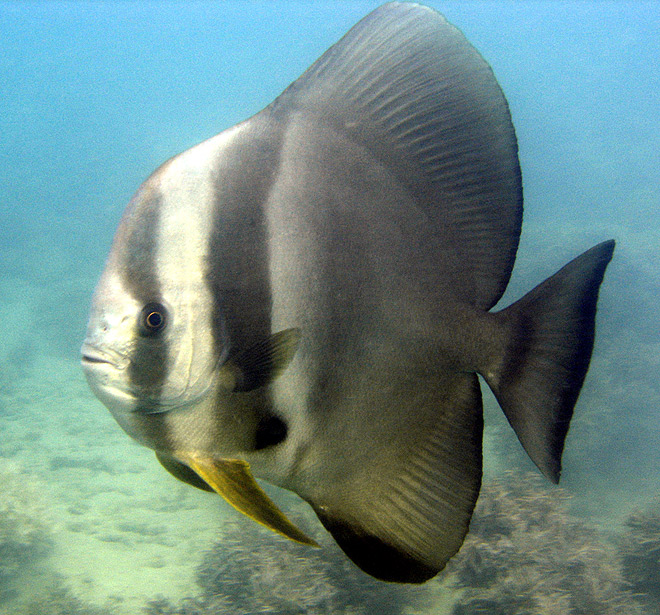While fish have different things going for them, it surely would pay to be a batfish, an elongated, laterally flattened species that could dart through the narrowest of crevices. Besides providing a good game, such a skill would surely prove useful in a fleeting escape from a hungry predator.
These reef dwelling fish can often be seen at the Great Barrier Reef, although their appealing good looks means they’re also commonly kept in aquariums. However, it’s the younger fish that are more likely to attract a roving eye, as their pectoral, dorsal and anal fins quickly grow to a length before shortening with age.

Above: This Batfish was photographed at Low Isles on The Great Barrier Reef off the coast of Port Douglas, Australia.
Batfish are often seen swimming alone, but can also be spotted in groups of more than 100. The adult batfish are known to change colour while hanging around feeding stations. Here they can change from silver to dark brown quite quickly, and divers have often been known to confuse their offspring with the Angel fish, which look similar but are not closely related.
Batfish have very symmetrical anal and dorsal fins, and have dark bands that run over their silvery bodies. Their eyes are concealed under these bands, giving them the appearance of a stealth-like pelagic crusader. They also have small mouths which they use to feed on a variety of organisms.
Being omnivores, Batfish feed on small invertebrates as well as seaweed. However, there’s concern their overfishing may cause harm to the reef environment, since they’re amongst the only fish known to consume the weed.
Often residents in aquariums, it’s surprising that relatively little is known of their reproductive cycle. They’re thought not to guard their offspring after giving birth, but research remains inconclusive. The batfish is also known to have a swift growth rate.
